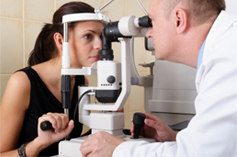All Glaucoma Medication Medications
Your source for essential Glaucoma Medication.
All Glaucoma Medications
Don't have time?
Quick Order
Upload doctor's prescription and we will find the cheapest medication available.
If you have any
Questions
call us toll free
1-877-536-8162
OR Email us at
info@onlinepharmaciescanada.com
What is Glaucoma?

If you are over the age of 40 and have a family history of glaucoma, have a complete eye exam with your opthalmologist every couple of years.
What Are the Types of Glaucoma?
There are two main types of Glaucoma
- Primary Open Angle Glaucoma – This is the most common type of glaucoma, happening when the eye’s drainage canals become clogged. The inner eye pressure rises because the right amount of fluid cannot drain out of the eye. With open angle glaucoma, the entrances to the drainage canals are clear and should be working properly. The clogging problem happens inside the drainage canals. Most people with this type of glaucoma have no symptoms and no warning signs. If open angle glaucoma is not diagnosed, it can cause gradual loss of vision. It develops slowly and sometimes without being noticeable for many years. The good thing is that open angle glaucoma responds well to medication, especially if it is diagnosed early and treated.
- Angle Closure Glaucoma – This type of glaucoma can also be called acute glaucoma, or narrow angle glaucoma. In this type of glaucoma, the eye pressure usually increases rapidly. This happens when the drainage canals get blocked or covered over. With angle closure glaucoma, the iris and cornea are not as wide and open as they should be. The outer edge of the iris bunches up over the drainage canals when the pupil quickly enlarges. A test can be done to see if your angle is normal and wide or abnormal and narrow. Treatment of this type of glaucoma involves surgery to remove a small portion of the outer edge of the iris. This helps to remove blockage from the drainage canals so that the fluid can drain. After surgery, it is important to go for regular checkups. Symptoms of angle closure glaucoma include headaches, eye pain, nausea, rainbows around lights, and very blurred vision.
- Secondary Glaucoma – occurs as a result of an eye injury, inflammation, tumor, steroid use, or in advances cases of cataracts or diabetes. This type of glaucoma can be mild or severe. The treatment for secondary glaucoma depends on whether it is open angle or angle closure glaucoma.
- Pigmentary Glaucoma – A form of secondary open angle glaucoma that occurs when the pigment granules in the back of the iris break into the clear fluid produced inside the eye. These pigments then flow towards the drainage canals and begin to clog them resulting in the rise of eye pressure. Treatments usually include medication or surgery.
- Normal Tension Glaucoma – This is also known as low tension glaucoma or normal pressure glaucoma. The optic nerve is damaged in this type of glaucoma, even though the pressure in the eye is not very high. Doctors do not know why some people have optic nerve damage even though they have normal pressure levels. Those that are at greater risk are people with a family history of normal tension glaucoma, people of Japanese ancestry, and people with a history of systemic heart disease, such as irregular heartbeat.
- Cataracts and Glaucoma – This can be a natural part of the aging process. Many people over 60 may have both. Otherwise, the two are not associated. With the exception of glaucoma due to secondary causes such as trauma or steroids, glaucoma does not cause cataracts and cataracts do not cause glaucoma. While glaucoma is most often a problem with drainage, a cataract is a clouding of the eye’s lens allowing less light to pass through.
Who Gets Glaucoma?
Glaucoma occurs most often in adults over the age of 40, but it can also occur in young adults, children, and infants. In African-Americans, glaucoma occurs more frequently and at an earlier age and with greater loss of vision. You are at an increased risk of glaucoma if you: Are of African-American, Irish, Russian, Japanese, Hispanic, Inuit, or Scandinavian descent. Are over age 40, have a family history of glaucoma, have poor vision, have diabetes, take systemic corticosteroid medications, such as prednisone.
What Are the Symptoms of Glaucoma?
There are usually very few or no symptoms of glaucoma, especially in open angle glaucoma (most common). The first sign is often the loss of peripheral or side vision, which can go unnoticed until late in the disease. Attending regular eye exams is the best way to detect the disease. Occasionally with angle closure glaucoma, eye pressure can rise to severe levels causing sudden eye pain, headache, blurred vision, or the appearance of halos and rainbows around lights. If you have any of the following symptoms, seek immediate medical care: Seeing halos around lights, vision loss, redness in the eye, eye that looks hazy (particularly in infants), nausea or vomiting, pain in the eye, narrowing of vision (tunnel vision).It is important to have your eyes examined regularly. Your eyes should be tested at: Ages 35 and 40, after age 40, every two to four years, after age 60, every one to two years Those with any high risk factors, every one or two years after age 35.
How Is Glaucoma Treated?
Treatment of glaucoma may include prescription eye drops, laser, or microsurgery.
Glaucoma Eye drops – These can reduce the formation of fluid in the front of the eye, or increase its outward flow. Side effects of glaucoma drops may include allergy, redness of the eyes, brief stinging, blurred vision, irritated eyes. Some drugs for glaucoma may affect the heart and the lunds. Make sure you tell your doctor about any glaucoma medication you are taking or are allergic to.
Laser surgery – There are many types of laser surgery that are specific to your surgery needs. The type of laser surgery used depends on the type of glaucoma and the general health of the eye. Laser surgeries have become important in the treatment of different eye problems and diseases. During laser surgery, the eye is numbed so that there is little or no pain. The doctor holds a special lens to the eye and a laser beam is aimed into the eye. All you see is a bright light – like a camera flash. This will slightly increase the outflow of the fluid from the eye in open angle glaucoma, or eliminate fluid blockage in angle closure glaucoma. Types of laser surgery include trabeculoplasty where a laser is used to pull open the trabecular mesh work of the drainage area, iridotomy, where a tiny whole is made in the iris to allow the fluid to flow more freely, and cyclophotocoagulation, where a laser treats areas of the ciliary body to reduce the production of fluid.
Is there pain or discomfort with glaucoma laser surgery?
There is a slight stinging sensation associated with laser surgery, a local anesthetic is used to numb the eye. Once the eye has been numbed, there should be little or no pain and discomfort. Will laser surgery eliminate the need for medications? In most cases, medications are still necessary to control and maintain eye pressure. However, surgery may lessen the amount of medication needed.
How much recovery time is needed after laser surgery?
Laser surgery is usually performed in an eye doctor’s office or eye clinic. Before the surgery, the eye will be numbed by medicine. The eye may be a bit irritated and vision may be slightly blurry after laser surgery. A ride home on the day of the surgery should be arranged.In general, patients can resume their normal daily activities the day after the surgery. It is important to discuss any questions or concerns about laser surgery with the eye doctor.Microsurgery for glaucoma – When medicines and laser surgeries do not lower eye pressure adequately, doctors may recommend a procedure called filtering microsurgery (sometimes called conventional or cutting surgery).
In an operation called trabeculectomy, a tiny drainage hole is made in the sclera (the white part of the eye). The new drainage hole allows fluid to flow out of the eye and helps lower eye pressure. This prevents or reduces damage to the optic nerve.a new channel is made to drain the eye fluid, reducing eye pressure that causes glaucoma. Sometimes, this form of glaucoma surgery is unsuccessful and must be redone. For some patients, a glaucoma implant is the best option. Other complications of microsurgery for glaucoma include some temporary or permanent loss of vision, as well as bleeding and infection.
Is there pain during the microsurgery?
In most cases, there is no pain involved. The surgery is usually done with a local anesthetic and relaxing medications. Often a limited type of anesthesia, called intravenous (I.V.) sedation, is used.In addition, an injection is given around or behind the eye to prevent eye movement. This injection is not painful when I.V. sedation is used first. The patient will be relaxed and drowsy and will not experience any pain during surgery.







